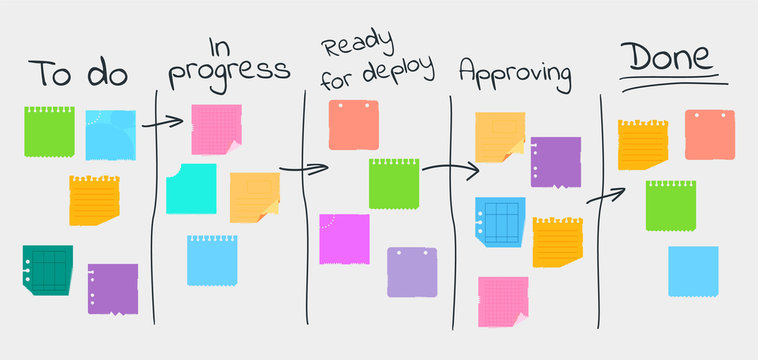KANBAN - Wa1ssy/Agiilsed-Tarkvaraarendus GitHub Wiki
What is Kanban?
Kanban is a visual workflow management method that helps teams manage tasks more efficiently. Originally developed by Toyota for manufacturing in the 1940s, the term “Kanban” comes from the Japanese word for “signboard” or “visual signal.” In modern usage, Kanban helps teams visualize their work, limit work in progress, and improve workflow.
IMAGES

Where is Kanban Used?
Kanban is widely used in many industries, including:
- Software development (especially Agile teams)
- Manufacturing
- IT operations and DevOps
- Marketing and content creation
- Project management
- Personal productivity tools
Sources
It’s most effective when work needs to flow through several stages, such as “To Do,” “In Progress,” and “Done.”
Core Principles of Kanban :
- Visualize the workflow – Use a board with columns that show each step in the process.
- Limit Work in Progress (WIP) – Set limits to avoid multitasking and overload.
- Manage flow – Focus on smooth movement of tasks through the workflow.
- Make policies explicit – Clearly define how tasks should be handled.
- Use feedback loops – Improve through regular stand-ups, reviews, and retrospectives.
- Improve continuously – Adapt and optimize the process based on data and experience.
Pros of Kanban
- Easy to understand and implement
- Great visual overview of work
- Helps identify bottlenecks quickly
- Encourages focus and reduces multitasking
- Flexible and easy to adapt to changing priorities
- Supports continuous delivery and improvement
Cons of Kanban
- Doesn’t include timeboxing (e.g., sprints), which can lead to poor time estimation
- May lack structure if not properly managed
- Harder to track long-term goals and planning
- Scaling it to larger teams may require additional tools or frameworks
Popular Kanban Tools
- Trello – Simple drag-and-drop boards
- Jira – Popular in software development with advanced features
- GitHub Projects – Great for developers managing issues and pull requests
- Asana, Monday.com, ClickUp – Tools with built-in Kanban views
Kanban vs Scrum
FEATURE KANBAN SCRUM Structure Continous flow Time-boxed sprints Roles No specific roles required Defined roles Change handling Changes allowed anytime Changes only between sprints Metrics Cycle time, lead time Velocity, burndown chart